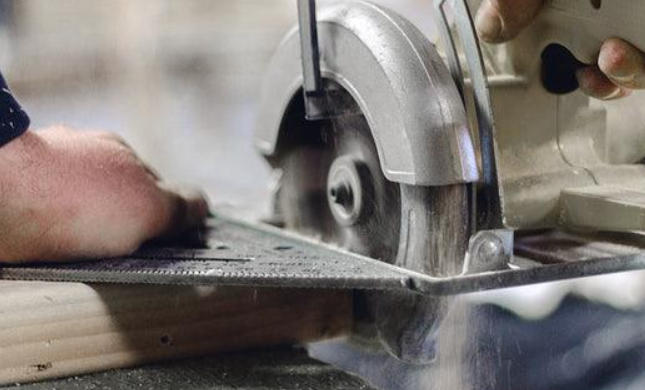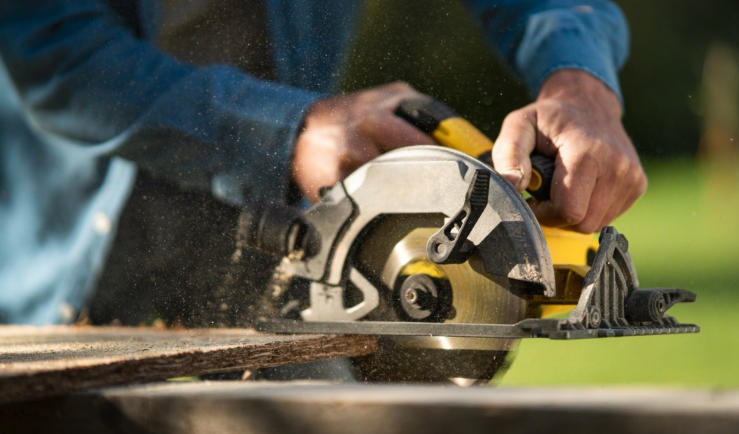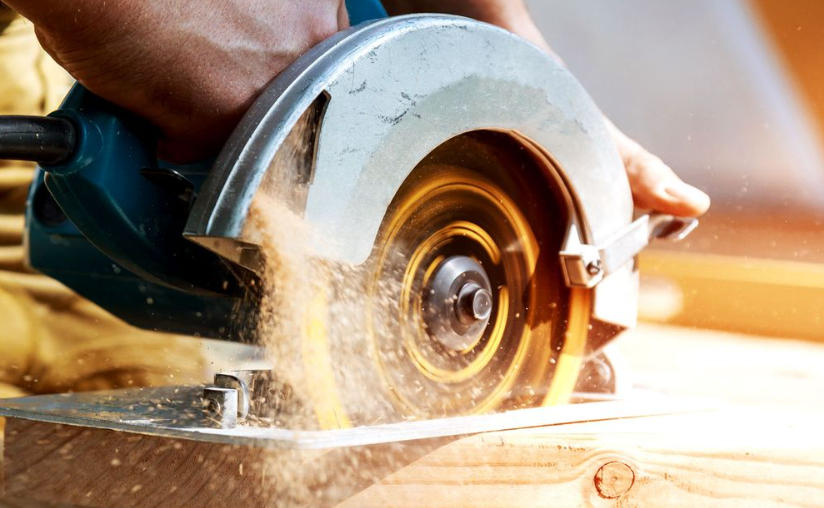Views: 0 Author: Site Editor Publish Time: 2025-10-24 Origin: Site








If your list of home improvement projects is growing, a circular saw has probably made it onto your essential tools checklist. This powerful and adaptable tool handles a range of jobs—from cutting boards to trimming shelves and even crafting custom furniture pieces. However, while it's an incredible helper in your DIY toolkit, it also requires care and respect to use safely. Confidence and caution are the keys to success!
In this guide, we'll show you how to operate a circular saw safely and effectively—from preparing your workspace to understanding saw types and mastering clean, precise cuts. Whether you're a first-time homeowner or a hands-on DIY enthusiast ready to upgrade your skills, this step-by-step guide will help you handle a circular saw like a pro—safely, smartly, and confidently.

A circular saw is one of the most reliable tools in the DIY world. Its high-speed, rotating blade can cut through materials like wood, metal, and even plastic, making it ideal for a wide range of home improvement tasks—from small touch-ups to major renovation projects. But remember, this power also comes with risk if you're not handling it properly.
In this guide, you'll learn everything essential for beginners: how to choose a user-friendly circular saw, what safety gear you need, and step-by-step techniques to make accurate, controlled cuts with confidence.
Ready to begin? Let's walk through everything you need to know to operate your circular saw safely and effectively.
Before powering up your saw, take a few minutes to set up your workspace and gather the right protective equipment. A little preparation goes a long way in ensuring safety and smooth performance.
1. Choose Your Workspace Wisely
• Stable Surface: Avoid working on unsteady tables. Instead, set up a sturdy workbench or solid sawhorses. Stability keeps your cuts accurate and your hands safe.
• Good Lighting: Bright, clear lighting helps you see your cutting line clearly, reducing the risk of mistakes or uneven cuts.
• Keep It Organized: Clear away any unnecessary tools or clutter from your workspace. Also, make sure the floor is free of debris or cords that could cause tripping mid-task.
2. Always Use Safety Gear
It might sound basic, but safety equipment is your best protection when operating a circular saw. Before starting any cutting, make sure you have the following:
• Safety Glasses: Essential for shielding your eyes from dust and flying debris.
• Ear Protection: Circular saws can be loud—earmuffs or earplugs will protect your hearing during extended use.
• Dust Mask: Prevent inhaling sawdust by wearing a quality dust mask—it helps keep your breathing safe and comfortable.
• Heavy-Duty Gloves: Provide extra grip and safeguard your hands from accidental contact with rough materials or sharp edges.

When selecting a circular saw, you'll typically choose between corded and cordless models. Both options have advantages depending on your project needs.
• Corded Circular Saws: Perfect for larger or longer projects where constant power is essential. Simply plug in, and you can work continuously without worrying about battery life or reduced performance.
• Cordless Circular Saws: Ideal for portability and convenience. Powered by rechargeable batteries, these saws give you freedom to move around—especially useful for outdoor projects or quick cutting tasks. Just be mindful of keeping spare batteries charged to avoid interruptions.
1. Position Yourself and the Saw Correctly
• Maintain a Solid Stance: Stand slightly to the side of your cutting path, with one foot ahead of the other. This position keeps you steady and out of the saw's direct line if it happens to kick back.
• Hold the Saw Properly: Always keep both hands on the tool—one gripping the handle and the other holding the pommel. A firm and balanced grip gives you better control and ensures smoother, more accurate cuts.
2. Starting the Saw
• Let It Reach Full Speed: Before making contact with the material, allow your circular saw to reach its full operating speed. This reduces jerky starts or sudden sticking that can throw off your cut.
• Follow the Cutting Line: Move at a controlled pace and let the saw do most of the work. Forcing it through the material increases stress on the blade and raises the risk of kickback.
3. Preventing Kickback
Kickback is one of the most common—and potentially hazardous—issues encountered when using a circular saw. Here's how to minimize the risk:
• Keep the Blade Sharp: Dull blades are prone to snagging and catching the material, which can cause the saw to jerk backward.
• Use the Correct Blade Type: Always match your blade to the material you're cutting. Using a wood blade on metal or the wrong type of blade for plastic can be dangerous.
• Keep Hands Away from the Blade Path: This may sound obvious, but always make sure your hands, fingers, and body are never positioned in line with the blade's path.
A well-maintained saw not only delivers better performance but also ensures a safer experience and longer tool life.
Daily Maintenance Tips
• Clean After Every Use: Wipe off any dust or debris from the saw body, especially around moving parts, to prevent buildup and blockages.
• Blade Cleaning: Regularly clean the blade to remove residue and pitch that could reduce efficiency or cause uneven cutting.
Long-Term Care
• Store in a Dry, Safe Location: Keep your saw in a clean, dry environment to avoid rust or moisture damage.
• Battery Protection: For cordless saws, avoid exposing batteries to extreme temperatures. Store them at room temperature to maximize their lifespan.

Using Guide Rails for Accurate, Straight Cuts
If precision is your goal, guide rails are invaluable. They help your saw glide in a perfectly straight line, ideal for cutting long panels or plywood sheets with professional accuracy.
Add Dust Collection Attachments for Cleaner Work
If you're working indoors or in confined areas, a dust collection attachment can make a huge difference. It keeps your workspace clean and reduces airborne particles—protecting both your tools and your health.
Try Different Cutting Techniques
• Straight Cuts: The foundation of most DIY projects, perfect for making clean, even edges on panels and boards.
• Angled or Bevel Cuts: Great for creating joints or decorative finishes where angled edges are needed.
• Plunge Cuts: Useful for cutting openings in the middle of materials, such as for windows, vents, or inlays.
How Often Should the Blade Be Replaced?
If your saw starts cutting slowly, leaves burn marks, or feels like it's dragging, it's time to replace the blade. Check regularly for dullness, chips, or bent teeth.
Can a Circular Saw Be Used Indoors?
Yes—but ensure proper ventilation and always wear a dust mask. Indoor cutting can get messy, so consider using a dust collection system or work near an open window to minimize cleanup.
What Materials Can a Circular Saw Cut?
With the right blade, circular saws can cut through a variety of materials including wood, plastic, metal, and even masonry. Just confirm that the blade type matches the specific material for safe and effective results.
A circular saw is an invaluable tool for anyone passionate about DIY, and now you know how to use it the right way. By following these safety steps, maintaining your equipment, and practicing with patience, you'll gain the control and confidence to handle nearly any project.
Take your time, prioritize safety, and remember—mastery comes with practice. When used correctly, a circular saw is more than just a cutting tool; it's a gateway to countless creative and functional projects around your home.
Ready to take on your next build? Explore our recommendations for essential power tools and get equipped to bring your DIY visions to life with confidence and precision!
